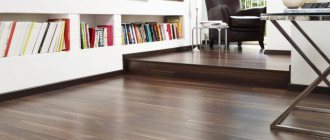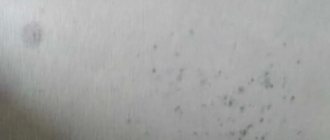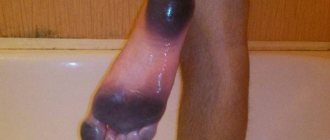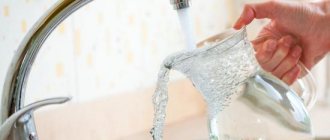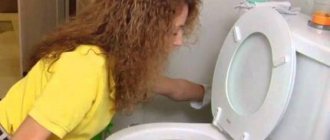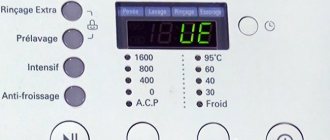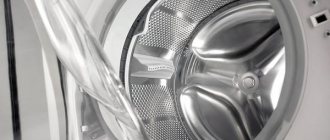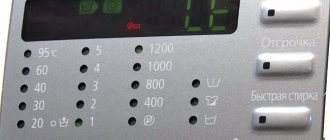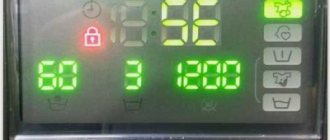Laminate is one of the most popular and popular flooring options. It is easy to install, durable, looks nice after installation and has good performance properties. However, sometimes there are situations when the laminate swells at the joints due to water, in such circumstances it is necessary to decide what to do and how to fix it as quickly as possible. There are several options for emergency and not so emergency measures, but for a better understanding of the process of drying the floor covering, it’s worth watching the video.
Why did the laminate swell: reasons
An important stage in eliminating emerging defects is determining the cause of their occurrence, since this is what determines the steps to restore the appearance and functionality of the coating. There are many reasons why laminate swells immediately after installation or during use. Let's name the main ones:
- Violation of installation rules - lack of deformation gaps between the lamellas and the wall, which should be 10-20 mm. The swelling in this case will be wavy. Another reason for the deformation of the coating is the presence of fasteners between the slats. Floating installation method is recommended. The need for gaps is explained by the expansion or contraction of laminated planks with fluctuations in temperature and humidity.
- Modern laminated material withstands wet cleaning and short-term contact with moisture well. However, prolonged exposure to water often causes laminate seams to swell. If tea or coffee is spilled into the joints, the liquid must be blotted up immediately with a rag. If water remains in the seam for a long time, the floor surface will become deformed.
- Poorly prepared base. In this case, you will need to completely disassemble the coating and correct defects in the base surface. The cause of swelling of the lamellas can be high residual moisture of the base surface. Each material has its own standard: for reinforced concrete floors - 4%, cement-sand screed - 5%, plywood, wood, chipboard - 12%.
- The backing is too thick. This reason can be attributed to improper preparation of the base, since when leveling the base surface, the substrate is rolled up in several layers. The consequence is that laminated boards spring back, locks become loose and soon break.
- Normal humidity conditions in a room with laminate flooring are 40-60%. If these indicators are higher, then in such a room only material with a water absorption coefficient of no more than 7% can be laid.
Water-swollen laminate flooring
Useful tips
When installing laminate flooring, the first step is to choose the right underlay material. The best option is a panel of compacted pine needles. It perfectly allows water vapor to pass through, so if it is flooded, drying the floor on such a lining will not be difficult. If you need to re-lay the flooring, the coniferous underlay will have to be replaced, and popular cork sheets can be dried in the open air, first covered with paper. Cork practically does not absorb moisture, but at the same time it collects foreign odors. Therefore, after removing expensive building materials, it is advisable to clean them with water, after adding a little hydrogen peroxide to it.
In what cases can a swollen laminate be corrected without dismantling?
If the laminate is swollen at the joints due to the lack of a deformation gap, then this defect can be eliminated without disassembling the coating, which must be done:
- dismantle the baseboard;
- identify areas that abut the wall;
- cut off parts of the lamellas with an electric jigsaw, grinder or other convenient tool, leaving a gap between the coating and the wall of 10-20 mm, but be sure to take into account the width of the plinth;
- In places of swelling, gently press on the panels to eliminate warping. If the floor cannot be leveled in this way, the deformed area will have to be dismantled and laid again.
In rooms with a normal level of humidity and a stable temperature, a gap of 10 mm is sufficient; in buildings where there are sudden changes in temperature and humidity, it is recommended to increase the gap to 15-20 mm.
Basic mistakes
If the laminate is swollen due to water, how to fix the defect? Damage can occur both to individual segments that make up the coating, and to entire zones that include many components. Low quality material deteriorates especially quickly when used in the kitchen or bathroom due to the combined influence of various factors. Particularly dangerous is the swelling of the laminate after water, which makes it unsuitable for further use. Also, the floor may become unusable due to untimely elimination of the causes of damage. Spilled liquids that were not wiped up in a timely manner are especially dangerous for such a surface.
What to do if the laminate is swollen from moisture: ways to correct the situation
If the surface deformation occurred due to high humidity of the base, then the lamellas will have to be dismantled to dry them in a room with a good ventilation system. The moisture content of the base must be brought to the required level.
Advice! When disassembling, it is recommended to number the planks and put them in their original place, since during operation the locking joints are slightly deformed.
What to do if the laminate is swollen due to significant amounts of water?
In this case, at the point of swelling, it is necessary to remove the lamellas and check whether liquid has leaked under the substrate. If this happens, then it is necessary to dismantle the floor around the place of deformation, dry the substrate, and reassemble it.
Material quality
Budget varieties of laminate are made from pressed paper with a low content of sealing resins and the thinnest PVC coating. The decorative layer has very thin edges that can be deformed at the slightest stress during installation, thereby exposing joints or forming local swellings of the surface. The penetration of moisture under the protective surface of such a coating leads to swelling of the laminate base. If the laminate is swollen from water, how to correct the formation of voluminous bumps? This can be found out by considering some recommendations.
Repair of laminate flooring in sections
How to repair a swollen coating with your own hands if you need to remove individual damaged laminate strips and replace them with new ones? For planks with a locking connection this is done as follows:
- dismantle the plinth from the side closest to the damaged area;
- use a chisel or hook to pry up the end board;
- disassemble the required number of panels.
If such disassembly from the wall is difficult or impossible, then you can replace one panel, for this:
- a rectangle is cut out inside the damaged lamella, several centimeters around the perimeter smaller than the entire panel;
- using a hammer and chisel, remove the central part, and then the remaining elements;
- if the situation allows, then adjacent rows of panels are tapped into the sides of the walls (for this you will have to dismantle the baseboards), there should be enough space to install the locks of the new lamella;
- if the previous operation cannot be carried out, then the locks are cut off on three sides, a new strip is inserted with one lock, all sides are coated with glue;
- The new board is lowered into place and pressed evenly over the entire area.
If you cannot avoid dismantling the damaged area, you can replace one board without dismantling the entire floor
What are the ways to eliminate defects?
There are a number of typical methods that will help hide or remove all types of deformation. First of all, remember the guarantee that the work crew gave if you did not do the installation yourself. Contact the company that handled the work issues. They will either be able to pay compensation or send workers. But only if the problems occurred during the warranty period.
Bloated laminate against the wall
In other cases, you will have to act independently. If there are violations due to installation technology, then everything can be corrected quite easily. Find a place on the covering that fits tightly enough to the wall and trim the laminate in this place by a couple of centimeters. This will allow the laminate to level out, and after that it will be possible to return the lamella to its place. It doesn't even require any dismantling.
If deformation occurs due to an abundance of moisture, you need to do the following:
- The part of the laminate that is damaged will have to be removed and the slats will have time to return to their original shape.
- Naturally, all liquid must be removed and dried. Check to see if there is any liquid under the adjacent slats. Otherwise, all these actions will be in vain.
- The slats will have to be replaced.
If you cannot find parts that will match the color and pattern with the rest of the coating, then here you can use a trick. You can use parts from those hidden under the bed or sofas, and put those closest in color there. But it’s still worth buying the material with a reserve, just in case of such defects and unexpected installation. And one more plus to the collection of high-quality products - after thorough drying, they can return to their original state, but inexpensive options with low quality will definitely have to be changed. Preventing such problems is also very simple - treat the laminate with a wax-type product, and even if there is a sharp increase in humidity and the floor floods, the wax will reduce the risks to a minimum.
We are talking about processing specifically seams. But for this it is necessary to prepare the floors, that is, remove all dirt and dust, and also check the dryness of the laminate. After this, you can safely cover the seams with a product that will also protect against water.
After the layer is applied and dries, it is recommended to polish the entire surface. This is necessary to remove wax from the floors, leaving it only in the seams or cracks in the laminate.
The wax needs to be applied about two times, the second one immediately after the first one has dried. Please note that such products can be very toxic, so the room must be regularly ventilated, and you must wear special clothing when working. Once both coats are completed and the floor has been sanded, it is recommended to leave it for about ten hours to allow the wax to adhere.
If this seems not enough to you and you want to protect the laminate one hundred percent, then there is a polish that creates a kind of protective film
If you are flooded, then even such precautions will not be able to do anything, but in case of a simple spilled water or its accidental entry, this will help
If the laminate is swollen due to high humidity, how to correct the situation with an iron?
This is a popular method, and it is not always effective. It can only be used for high-quality material and only in cases where water has not wetted the substrate.
How to level laminate flooring with an iron without replacing slats if the slats are wet and swollen:
- the heating temperature should be average or slightly below average;
- a metal ruler is placed on the swollen area, usually the joint between two planks;
- iron the ruler.
Attention! Overheating the surface will damage the lamellas.
Rules for preventing deformation
To avoid swelling of the laminate, you should adhere to the following rules for using the coating:
- Make your choice only in favor of high-quality products from trusted manufacturers. In this case, you can be sure that the coating is made of high-quality materials and will not deform even with prolonged contact with water.
- The class of the product must correspond to its application.
- The substrate under the laminate must be carefully prepared and have a reliable waterproofing layer.
- When installing lamellas, it is necessary to comply with all requirements and take into account the compression space between the floor and the walls.
- Wet cleaning must be done carefully. There should be no puddles on the surface of the laminate.
- The integrity of the coating must not be compromised. If it is necessary to fasten furniture, a radiator, etc. to the floor, it is necessary to connect the objects through the holes in the panels directly to the screed.
- Use special waxes or polishes to protect the laminate from periodic exposure to moisture.
How to fix laminate flooring that is swollen because the backing is too thick?
This is a complex option that requires complete dismantling. You can, of course, only replace the strips in places where the coating is deformed. However, over time, deformations may appear in other places. Therefore, to obtain a high-quality finishing layer you should:
- disassemble all panels and remove the backing;
- correct base layer defects, if any;
- Place a substrate of the required thickness.
What to do with swollen laminate flooring whose locks have been damaged? The ideal option is to purchase replacement slats from the same batch.
Preventing bloating
Correcting defects is much more difficult than preventing the reasons why laminate flooring swells.
Preventive measures:
- Proper preparation of the base layer, compliance with standard humidity before laying the finishing layer, optimal thickness of the substrate.
- Good quality locking connections. You can check it by fastening two strips. Their connection should occur after pressing under force and be accompanied by a characteristic click. Weak locks connect easily and quickly and just as easily fall apart.
- Good quality material. High-quality products are easy to install and better withstand deviations from normal operating conditions. Higher material classes - 33 and 34 - usually have increased moisture resistance. For rooms with high humidity, it is recommended to lay laminated panels with a PVC base rather than wood components.
- Entrust the installation to professionals or carry it out after carefully studying the intricacies of the process.
- Impregnation of joints with wax-based compounds.
To avoid repairing a swollen laminate, you must follow the rules for caring for the installed coating:
- care for material of classes 31 and 32 mainly in a dry way using a broom or vacuum cleaner;
- Panels of class 33 and 34 should be cleaned using a combination of dry and wet cleaning.
You can read about how to wash laminate flooring to prevent it from swelling, care rules and products for laminate floors in the article.
How to protect?
It is impossible to predict absolutely everything. But following simple rules of prevention during installation and care of laminate flooring will help you avoid unpleasant moments in most cases:
Periodically treat the joints of the panels with a wax pencil, it will prevent water from getting under the top layer and soaking the boards. Do not use aggressive chemicals to wash floors, they damage the protective layer
The same applies to abrasive substances. Rub the surface of the panels with liquid wax or mastic to increase moisture resistance and improve performance. Wring out the cloth thoroughly when washing and wipe dry. Wipe up spilled liquid immediately. Pay attention to the label when purchasing - the laminate must be suitable for the conditions in which it will be used (type of base, humidity level, room temperature, heated floor). A dense laminate suitable in all respects will last for many years. Apply soft protective discs to furniture legs and the bottom of doors to prevent damage to the coating when moving
It is good to replace wheels on furniture with rubberized or silicone versions. Maintain a constant humidity level between 35-65% so that the boards “walk” less. Don't walk on the floor in heels. Lift heavy furniture when moving.
There are models of different classes, prices and quality on the market. The difference between them also lies in the impregnation of the seams and coating. For example, the locks and hidden seams of waterproof laminate are often treated with wax. If you purchased unprotected panels by mistake or to save money, you can process them yourself.
The photo shows the use of wax crayons
Treating seams with wax (instead of sealant):
- Buy a color-matched pencil at a hardware store.
- Clean the surface from dust and dirt.
- Wax all joints, being careful not to go overboard.
- Remove any remaining material from the surface with a dry soft cloth.
Tip: wax crayons are also used to paint over chips and scratches, but it is prohibited to cover the surface of panels with them.
For shine and the formation of a light protective film over the entire surface, it is enough to add regular polish to the washing water:
- Vacuum or sweep the room.
- Add polishing agent to the water (the proportions of polishing agent and water needed are written on the packaging).
- Wash the floor along the boards with a soft cloth.
Important! There is no need to wash off this composition!
To increase service life, provide additional lasting protection and prevent premature deterioration of the laminate, take a special mastic:
- Wash the floors thoroughly and wait until completely dry.
- Pour the mastic onto a soft cloth.
- Rub along the grain, distributing the mixture evenly.
Important! You cannot walk on a laminate rubbed with mastic until it is completely dry. Laminate flooring is stylish, tactile and warm, but requires special care
Follow the recommendations of specialists when purchasing, installing and maintaining - then the laminate will serve you for a long time
Laminate flooring is stylish, tactile and warm, but requires special care. Follow the recommendations of specialists when purchasing, installing and maintaining - then the laminate will serve you for a long time.
